
- Average saving: $4,104
- Trade-in option available
- Pick-up or delivered
- Average saving: $4,104
- Trade-in option available
- Pick-up or delivered
Quick Verdict: If you're keen on getting that Toyota badge on your 4WD but can't afford a Prado or Land Cruiser, then consider the Fortuner. It's thoroughly enjoyable to drive in urban and off-road environments, and although it lacks luxury, it's built to last family mayhem.
I've always liked Toyota. I've owned (or my old man owned when I was borrowing his car incessantly) a LandCruiser, a Prado, an Aurion and a Kluger. The latter being my current car. I like their reliability above all else, but I've always been a fan of the way they provide comfort and flexibility without sacrificing performance, too.
Yet any long-term relationship eventually becomes a bit of a love-hate relationship and the acceptance of flaws. And it was through this lens that I climbed up behind the wheel of the 2021 Toyota Fortuner. Could this be the fresh love of my life? Is there even a place for it between the Prado and the Kluger? Let's dive into my 2021 Toyota Fortuner review. And for comparison, you can also check out me LandCruiser 300 series review.
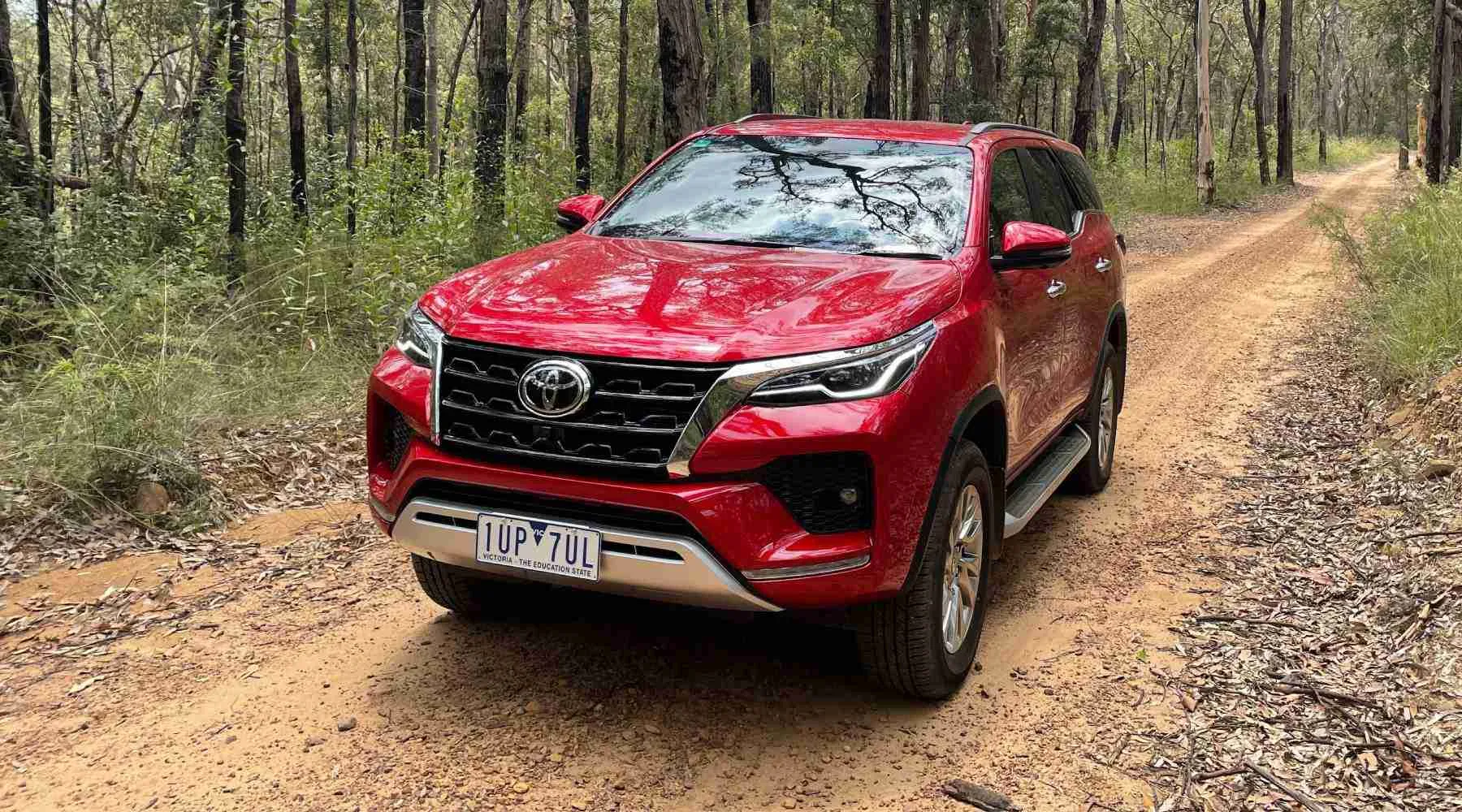
My first reaction to the Fortuner when it rolled across my path was "why does this exist?". If you want a "soccer mum's SUV", then you get the Kluger – like me and my young family of 5 who go bush on occasion but are mostly doing urban activities. If you want a 4WD, you get the Prado – unless you're loaded; then you get a Land Cruiser.
Toyota has identified – correctly in my opinion – that there is a market for people who want turbo diesel 4WD with their SUV but can't fork out the dollaroos for a Prado. In fact, when I bought my Kluger back in 2013, I would have jumped at the Fortuner for exactly those reasons.
In this respect, the Fortuner is much more aligned with the Prado than the Kluger. The 2021 Fortuner model has the same engine as the Prado and is very close on dimensions. This is an off-road-ready vehicle. However, it's sportier and more agile to drive than a Prado, giving it a bit more flexibility in urban environments.
Where it separates itself, for better or worse depending on where you want your money going, is with the quality of the interior, its singular fuel tank and the fact the Fortuner is built on the HiLux dual-cab chassis, which isn't quite as robust as the Prado chassis.
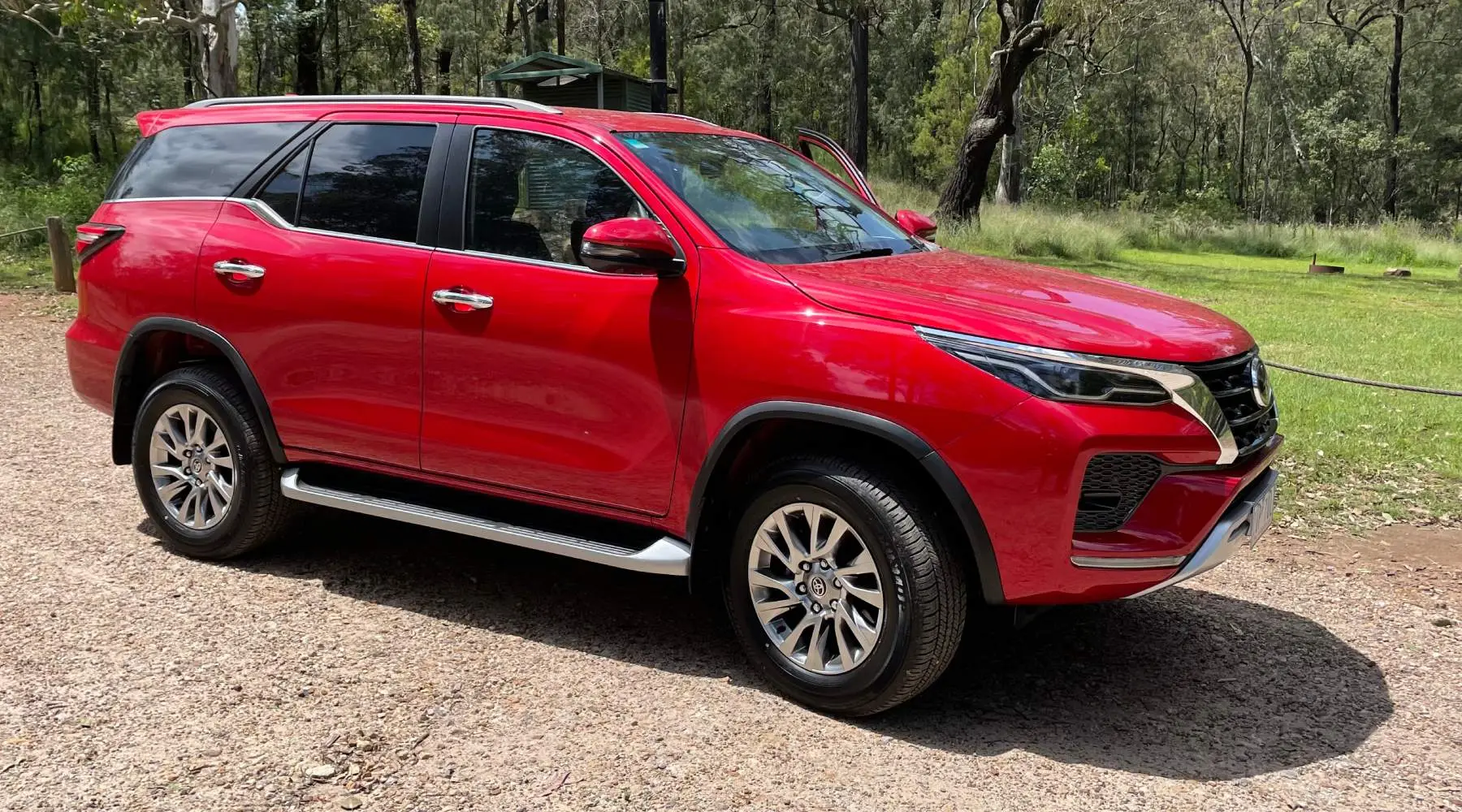
The 2021 Fortuner range is available in Australia now. However, like many vehicles – in particular, Toyotas – there can be some wait for delivery due to stock shortages. The Fortuner exists in 3 models. Each comes with a 5-year unlimited-kilometre warranty and the first 6 services capped at $250 a pop.
This places the full-spec Crusade's price at around the same price as the bottom-spec Prado. It's also comparable to the competing Ford Everest Trend Bi-Turbo. In coming in at these prices, the Toyota Fortuner certainly makes it an attainable entry point to the Toyota badge. However, it's still a fair bit more than the Pajero Sport Exceed and Isuzu MU-X LS-T.
My review vehicle was the Crusade. However, in comparing what you get for the extra $9K, I'd look at the GXL. That offers the best bang for buck in my opinion. The 5 most notable step-ups with the Crusade are the 18" tyres (up from 17"), 11 speakers (up from 6), leather-accented seat trim, a 240V plug for the back row and the automated tailgate. The latter is the most valuable in day-to-day use. Yet, you can live without all of them.
The GXL, by comparison, builds on the GX in many key areas – satellite navigation, digital radio, roof rails, automatic climate control and fog lights being the most notable. These are practical, often used features.
All models are home to 7 seats, the same 8-inch touchscreen, side steps (although this does lower the ground clearance to 216mm), a full-size spare tyre, reversing camera, Apple CarPlay and Android Auto.
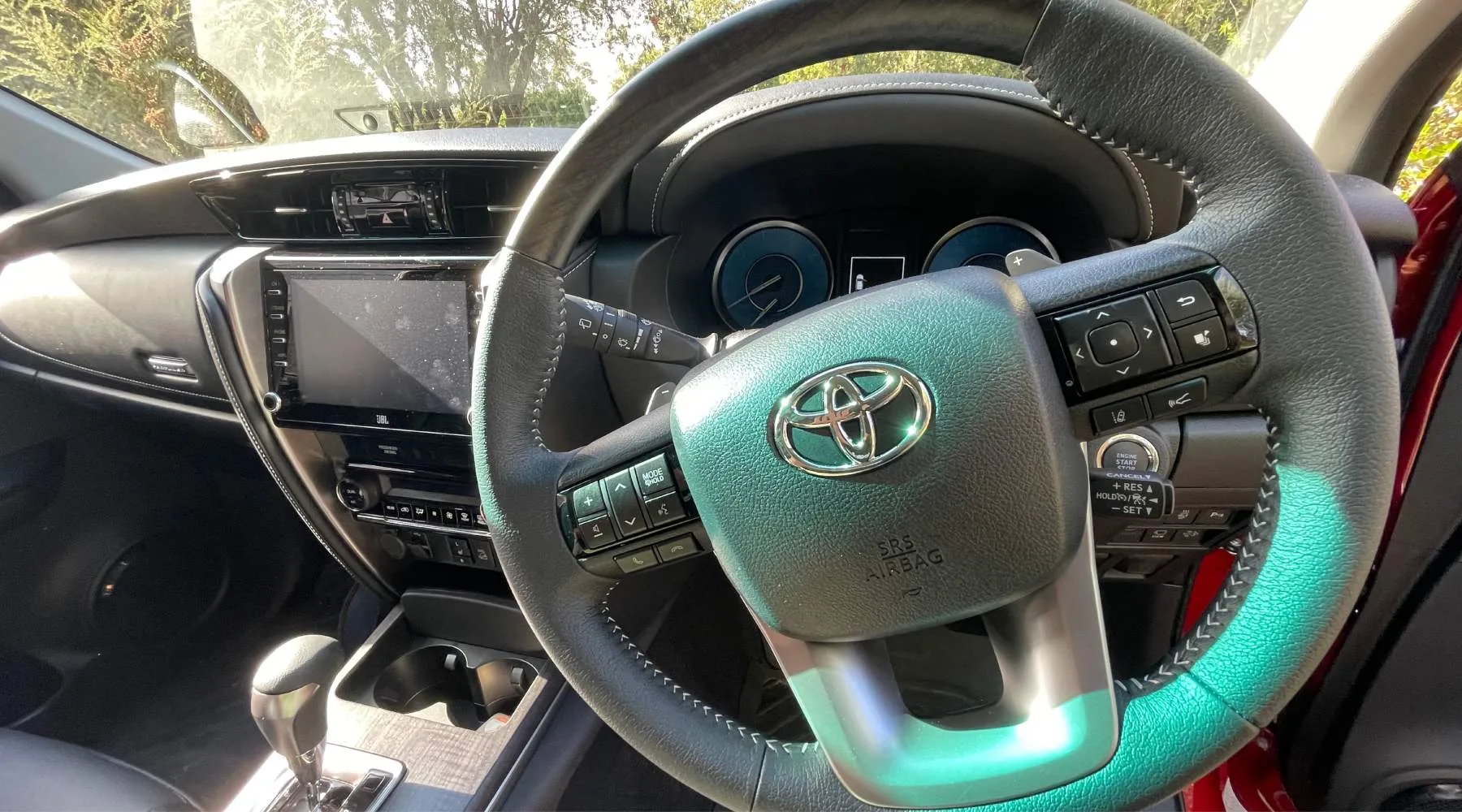
Despite being priced well below the Prado range, the 4WDs share the same base mechanical features. You're looking at a 4-cylinder 2.8L turbo diesel engine, delivering 150kW (at 3400rpm) of power and 500Nm of torque (between 1600-2800rpm). Those who have compared the latest entry with earlier Fortuner models will notice this represents a noticeable step up.
The single 80L diesel tank comes with a 7.6L/100km touted efficiency. My experience came in the low to mid 9L/100km range, which is still solid in my opinion. My Kluger guzzles unleaded to the tune of 16L/100km or more. And if you've ever tried to get around in the last-generation V8 Land Cruiser, then you'll know its consumption will bring you to tears.
Sadly, there's no manual option. Maybe I'm old school, but that's a punch in the guts. I realise that's the way things are moving – the Prado has ditched manual, too – but it's still lame.
Instead, you're stuck with the 6-speed automatic transmission. On the GXL and Crusade, there are paddle shifters, which add a micron of additional fun – for about 5 minutes. There are 3 drive modes: Eco, Normal and Sport. You can also use a dial on the front dash to switch between 2WD, 4WD Low and 4WD High.
The excellent 3.1 tonnes of braked towing is welcomed, but the lack of a bull bar is not. The 70mm water depth can be extended with the addition of a snorkel. All models come with a reversing camera and front and rear parking sensors. However, only the GXL and Crusade get the smart entry and start system.
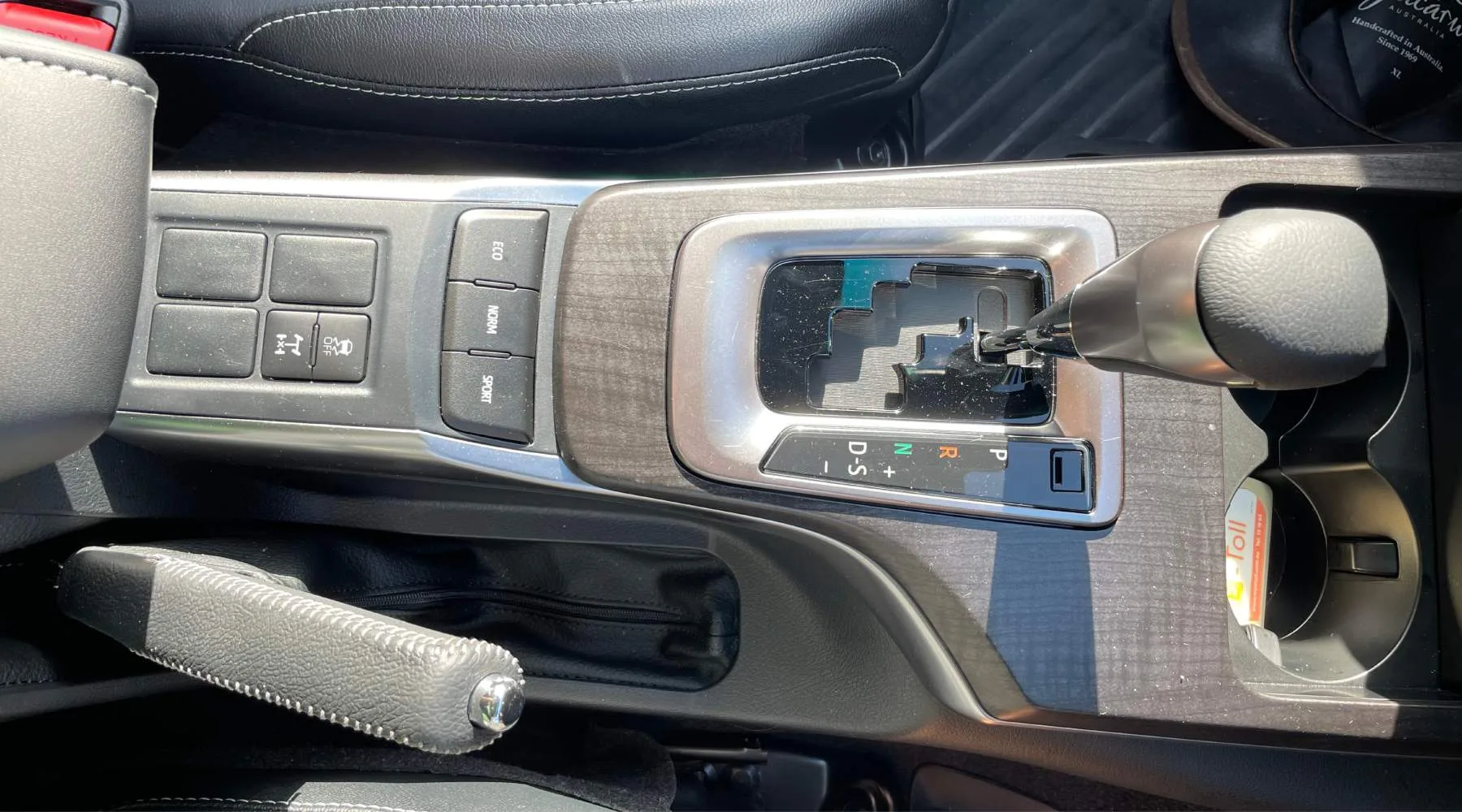
As mentioned, the Fortuner is built on the HiLux chassis, but there are a few notable tweaks to the underbelly. Although the steering is still hydraulic, a new variable-flow pump makes it a much easier drive than previous Fortuners. I will talk more about its agility later. The rear suspension moves from leaf to coils, and the brake pads evolve from drums to ventilated discs.
Personally, I think it's pathetic you only get 3 years of updates to Toyota Connected Services. The likes of SOS emergency call, automatic collision notification and stolen vehicle tracking should be ongoing.
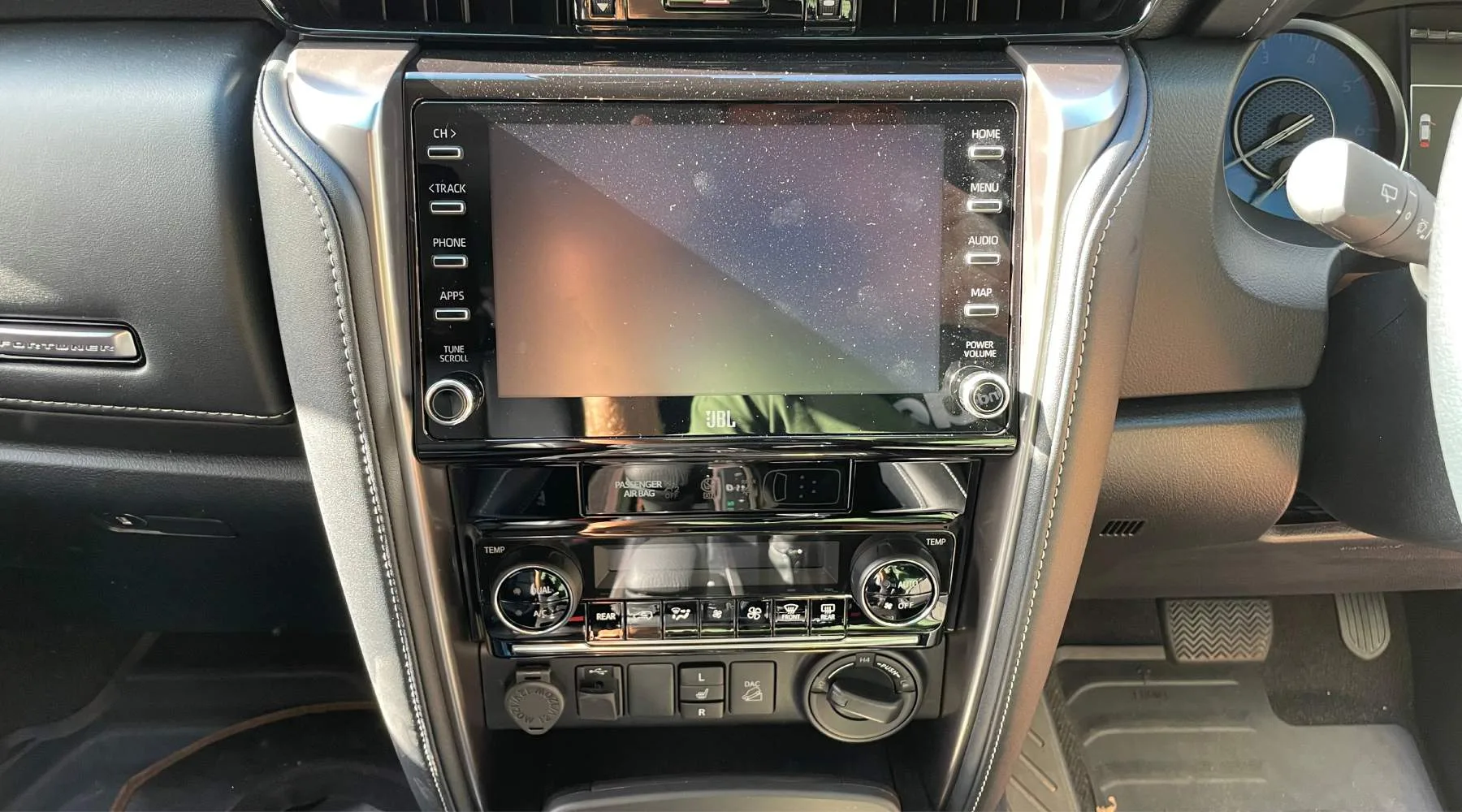
I've heard a few people comment about the Fortuner being a bit of an ugly duckling, but I quite like its tweaked look. It's modern and sleek, without any of those American-inspired blemishes we started to see with the last-generation Prados, such as a lumpy bonnet. The redesigned front end – mostly in the large black grille - gives the whole vehicle a more cohesive look.
It feels like it sits a little high at the back, but I quickly found myself appreciating the overall look each time I saw it sitting in my driveway. I was strangely proud of it, even though our time together is now over.
There are 8 colours available, with the Feverish Red a clear standout. Glacier White and Silver Sky go alright, too, and Saturn Blue is passable. But Crystal Pearl, Phantom Brown, Eclipse Black and Graphite are vomitus.
I'm far less enthused about the interior design. I get that the Toyota Fortuner is not meant to be the picture of luxury. This is the more utilitarian, more affordable, 4WD in the Toyota range after all. And there's a hard-wearing, retro feel to the inside I can respect – the build quality is robust throughout. But I still feel when you're spending this kind of coin, you can modernise a bit more.
The 8" infotainment unit feels dated out of the box. It's perfectly functional, but it's smaller than what we see in most modern cars. The operating system lacks pizzazz, coming off as bland and uninspired. I do like the fact that you can still operate it (and the air con) through physical buttons and dials – that's far better than mushing your finger onto a touchscreen. And it paired with my iPhone with ease and worked without issue. But there's little wow factor.
That extends to the dashboard, which again goes for a purely practical approach with its 4.2" screen. If you've been testing cars with very visual information feeds and computer-game like graphics between your dials, then you'll be disappointed.
The double glove box is a nice addition, but I found general space availability around the driver to be lacking. The centre console is small. There are only 2 drink holders and they are placed up forward, not by your arm. You will find 3 individual 12v plugs through the car, and a handy 240V plug in the Crusade model, but there's only 1 USB port. Seriously? In 2022?
Speaking of the Crusade, it ramps up the speaker count to an ear-melting 11, but it sticks them in some uncool spots. The 2 on the top of the dash are very poorly integrated. The chrome trim reflects incessantly on your front windscreen, meaning you and your passenger must look through it.
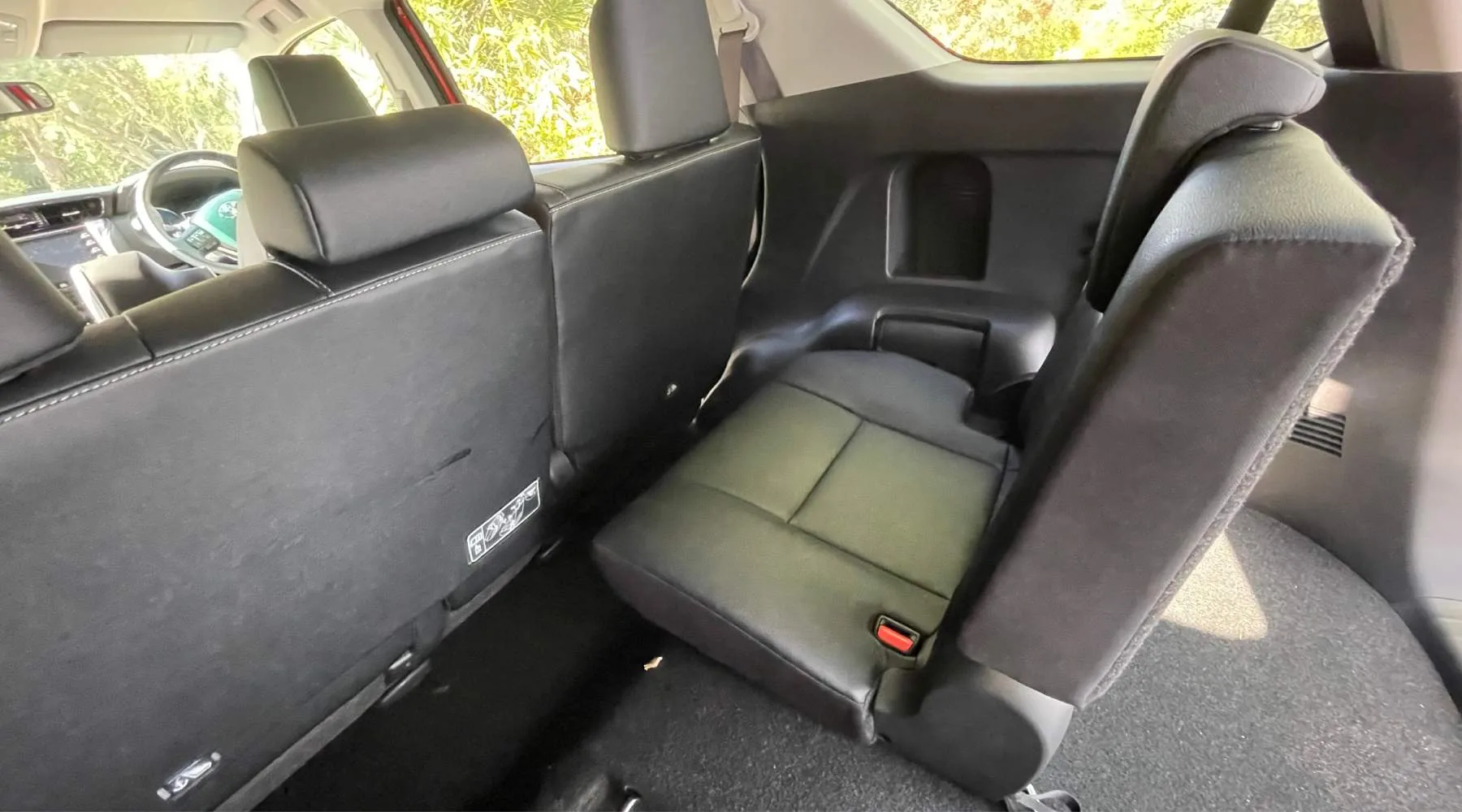
Space in the front row is awesome. I'm 194cm and broad, and I fit easy. There is plenty of head room – way more than the Kluger. There's a lot of range in the seat positioning, too. The second row has no worries on leg room, but I couldn't sit with a straight back without my head touching the roof. I'm tall, mind, but that's something to consider, especially in off-road environments where your tall teenager's head will be cracking the roof with every bump.
The last 2 seats are very tight on space and could handle small kids only, typically under 10. Their bigger sin, however, is that they don't fold down – as they do in my Kluger – but instead fold to the side like the 4WDs of the 90s. Not only does this greatly minimise your available boot space unless they are removed completely, but they create a blind spot when looking over your shoulder.
I realise I'm putting the boot in a bit here. The Toyota Fortuner is still a comfortable drive despite my misgivings. Yet, the failing inside the car is where we start to see the price gap between the Fortuner and Prado show. It's the lack in cabin polish and luxury that makes me most want to consider other options.
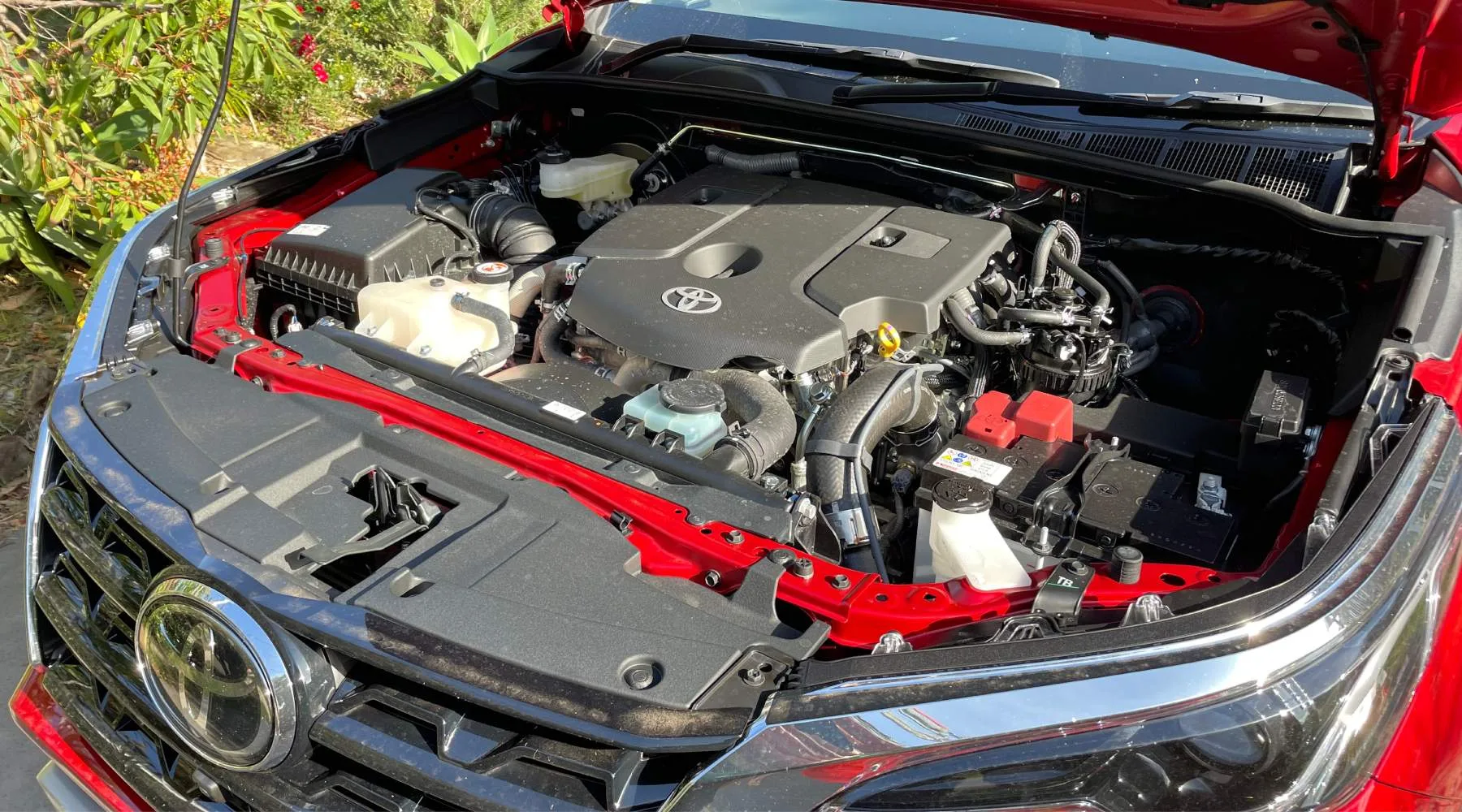
While I may lament some of the design choices, I can't argue with the performance. The 2021 Toyota Fortuner is a great drive and a clear step up from previous models. My initial concerns were that it would lack zip and turn like a tank. When the Prado first started leaning on the HiLux engine, for example, it just had no guts on hills and was laborious in urban locations. Not the Fortuner.
I was stoked with the zip off the line. Even up hills and on the highway at speed, it always had more love to give with a push of the pedal. I didn't notice as big a difference between the Eco, Normal and Sport modes with the Fortuner as I have in smaller SUVs and hatches, but there's still a step up there as well.
The Toyota Fortuner feels as light as a feather, too. It's a truly effortless drive with an agility that belies its size – especially the turning circle. I've driven my Kluger for almost a decade and I still can't get my head around its turning arc. I still stuff it up since it's such a tank to manoeuvre. Despite being the larger car – and calibrated for rural environments – the Fortuner is much easier to move in and out of tight spots.
While a good urban fit, the Fortuner excels as soon as you're off the pavement and into the loose stuff. I felt in control belting down dirt roads. It eats up the lumps and bumps, and I was happy with the body roll as I made the most of off-camber turns. If anything, it's almost too flighty at speed on dirt, but I tend to give cars a bit more of a nudge than most.
I wasn't over the moon with the transmission. A few too many times for my liking, it did stick at high revs for a tangible second or two rather than seamlessly transition between gears. These moments stuck out for being the only genuine misstep in the driving experience.
Being a Toyota, it does rattle a bit. They all do in my experience. What I was more surprised by was the sound coming through the door. You could hear the wind and road more than I would have liked – albeit that's something I personally notice. The JBL audio system is solid without being exceptional even when you have 11 speakers.
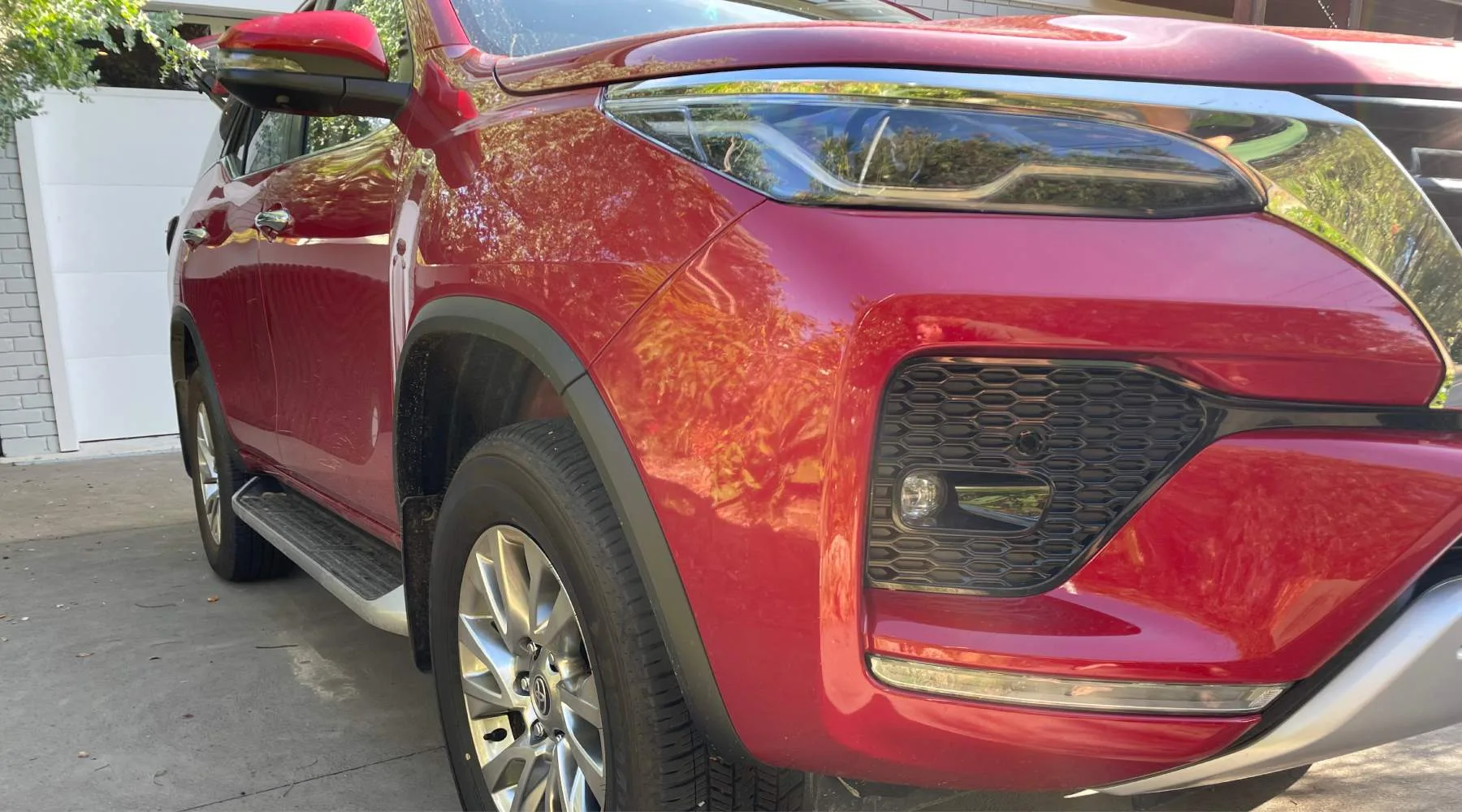
The 2021 Toyota Fortuner comes with the same 5-star ANCAP safety rating as its predecessor. All 3 models have 7 SRS airbags, plus you've got all the Toyota Safety Sense assists. The highlights being active cruise control (ACC) and a pre-collision safety system that includes pedestrians for night and day and cyclists during the day. There's lane departure alert and road sign assist, too. The latter picking up school zones, which is a plus.
You can certainly get plenty more assists than that on other cars, but I personally hate them. I want my safety features to be passive more than active and although the Toyota Fortuner beeps at you more than I would like, it's not as bad as my Kluger. And it never tried to reef the steering wheel from my hands.
One nice little addition is an orange light on the side mirror that warns if there is a car in your blind spot. I like that one.
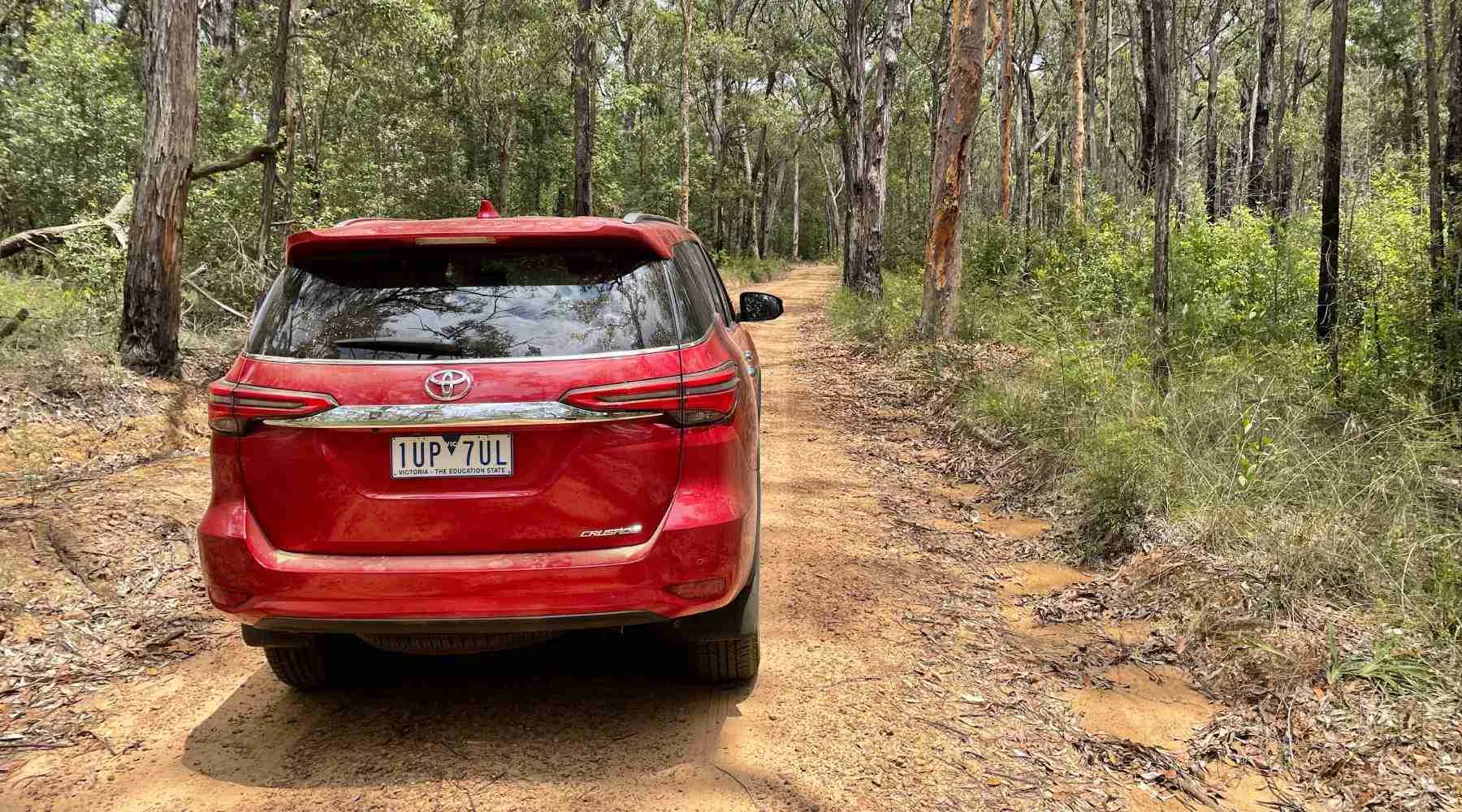
I really enjoyed driving the 2021 Toyota Fortuner – much more than I had expected to. I love its pop and agility in urban environments, which doesn't come at the cost of power and driveability off-road. If you want that Toyota badge, I reckon it delivers plenty for its price.
There are quite a few missteps in its interior design for me, such as the back seats, the reflective speakers, the infotainment unit, the lack of ports and the hard trim. I just think it could have been a bit more luxurious while still being rugged.
But overall, for a versatile family drive, it's a winner.
The previous Toyota 86 was a charming little thing, but when you put your foot down, it was like asking for a bit more horsepower from a Shetland pony.
Toyota says the HiAce carries the best resale value in the LCV segment. They are also the best-selling. This latest generation HiAce is better in every single way; reviewers appraised it highly (one reviewer even gave it a 100% rating, the highest we've ever seen).
We got behind the wheel of this opinion-splitting, ding-dong starting GR Supra in GT spec.
Can you believe this is the 12th-generation Corolla? The Corolla is a staple like hot chips, but journalists have said it is finally an exciting essential – more like loaded fries.
Looking to buy a 2+2 sports car? The Toyota 86 GTS may be worth adding to your shortlist.
When looking at the GXL you really need to consider what you want. Lacking some creature comforts and modern safety technology, the Fortuner is a bit behind some of its competitors.
When launching the C-HR, Toyota said it has "brought excitement and driving pleasure to the SUV market". We got behind the wheel of the 2WD Toyota C-HR Koba to see if that was true.
We’ve packed four expert motoring reviews of the Corolla into one review, saving you time.